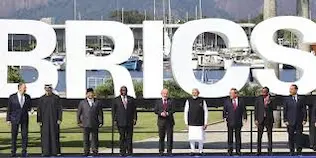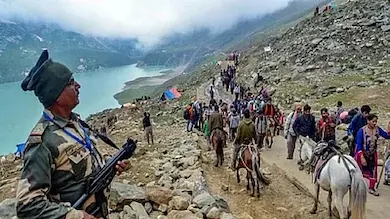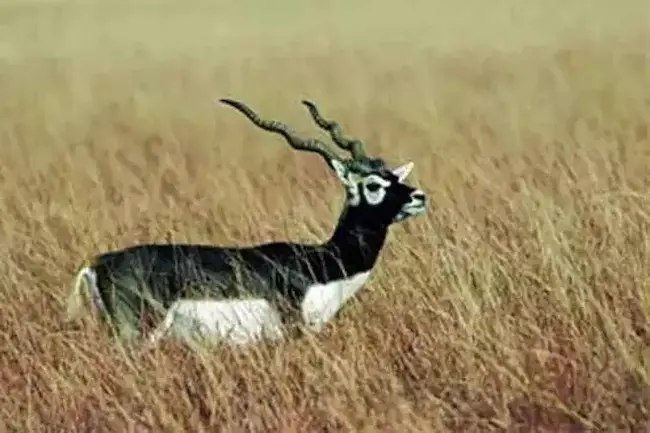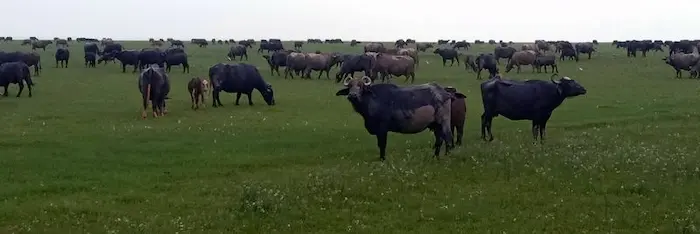1. BRICS Grouping Amid Rising Global Trade Tensions – International Relations

Why in News?
At the recent BRICS Summit in Rio de Janeiro, the U.S. President threatened a 10% tariff on BRICS member nations, escalating tensions in global trade dynamics. This move has renewed international focus on BRICS as a counterbalance to Western economic dominance.
What is BRICS?
Origin & Evolution
| Year | Milestone |
|---|---|
| 2001 | Term “BRIC” coined by economist Jim O’Neill (Goldman Sachs) |
| 2006 | First BRIC Foreign Ministers’ Meeting |
| 2010 | South Africa joins → BRIC becomes BRICS |
| 2023-25 | Group expands to include Egypt, Ethiopia, Iran, UAE, Indonesia |
BRICS at a Glance (2025)
| Indicator | Value |
|---|---|
| Population | ~3.5 billion (45% of world) |
| Combined GDP | ~$28.5 trillion (~28% of global GDP) |
| New Members | Egypt, Ethiopia, Iran, UAE, Indonesia |
| Headquarters of NDB | Shanghai, China |
New Development Bank (NDB) – BRICS Financial Arm
- Established in 2015 to fund infrastructure and sustainable development in emerging markets and developing countries (EMDCs)
- Voting Rights: Based on capital contribution; BRICS retains at least 55% of voting power
- Open to all UN members; no country holds veto power
- Promotes de-dollarization, and local currency trade among members
BRICS – Objectives and Significance
Core Objectives
- Promote multilateralism and equitable global governance
- Reform global financial institutions like the IMF and World Bank
- Enhance economic cooperation, infrastructure funding, and technological exchange
- Represent interests of the Global South
Current Relevance
- Serves as a counterbalance to Western-led institutions (G7, WTO)
- Platform for non-Western diplomatic coordination
- Pushes for local currency trade, reducing reliance on the U.S. dollar
Challenges and Criticisms
- Internal differences (e.g., India-China border tensions)
- Asymmetry in economic strength, with China dominating trade volumes
- Lack of common currency or trade policy
- Institutional limitations compared to G20 or WTO
India’s Role in BRICS
- Advocates for reform of global institutions
- Supports inclusive multilateralism
- Uses BRICS as a strategic balancing tool amid China–US competition
- Promotes Digital Public Infrastructure (DPI) and sustainable development goals (SDGs)
Exam Connect – Possible Questions
Prelims
1. The New Development Bank (NDB), established by BRICS, has its headquarters in:
A. New Delhi
B. Shanghai
C. Moscow
D. Johannesburg
Answer: B. Shanghai
2. Which of the following countries joined BRICS after 2023?
1. Egypt
2.Iran
3.Ethiopia
4.Brazil
Choose the correct option:
A. 1, 2, and 3 only
B. 2 and 4 only
C. 1, 3, and 4 only
D. All of the above
Answer: A. 1, 2, and 3 only
Mains
1. “BRICS has emerged as a strategic platform for the Global South, but internal asymmetries limit its effectiveness.” Critically examine the evolving role of BRICS in global governance. (250 words)
2. Discuss India’s engagement with BRICS in the context of shifting global economic power dynamics and the rise of protectionism.
2. Operation Shiva – Ensuring Security for Amarnath Yatra – Defence & Security

Why in News?
The Indian Army has launched Operation Shiva to ensure comprehensive security for the Amarnath Yatra 2025, a high-profile annual Hindu pilgrimage to the Amarnath Cave in Jammu & Kashmir. The operation reflects a multi-layered security strategy amid evolving regional threats.
About the Amarnath Yatra
- Location: Amarnath Cave in south Kashmir Himalayas
- Significance: Home to the naturally formed ice Shivling, symbolizing Lord Shiva
- Held annually during Shravan month (July–August)
- Route options: Pahalgam route (traditional) and Baltal route (shorter, steeper)
Key Features of Operation Shiva (2025)
Operational Goals
- Ensure safe, secure, and uninterrupted movement of pilgrims
- Counter potential terrorist threats and drone-based attacks
- Provide logistical, medical, and technological support
Security Deployment
| Security Element | Details |
|---|---|
| Troop Strength | Over 8,500 security personnel deployed |
| Counter-Terrorism Measures | Proactive surveillance, intelligence integration, area domination |
| Perimeter and Corridor Security | Tiered deployment along pilgrimage routes, base camps, and Holy Cave area |
Technological Integration
Counter-UAS Grid
- Over 50 anti-drone systems to detect, jam, or neutralize unmanned aerial threats
- Part of airspace denial strategy to counter drone-borne explosives or surveillance
UAV Monitoring
- Real-time surveillance via drones to monitor pilgrim movements, detect threats, and coordinate response
Medical & Logistical Support
- Over 150 doctors and medical staff deployed across camps
- Advanced mobile medical units for emergency care
- Coordination with civil administration for disaster management and weather alerts
Strategic Importance of the Operation
Why is Amarnath Yatra a High-Security Event?
- Takes place in a sensitive region with history of terrorist activity
- Large congregations of civilians in remote terrain make it a soft target
- Past attacks (e.g., 2017) have necessitated enhanced proactive security planning
Broader Implications
- Enhances public confidence in security agencies
- Demonstrates effective civil-military coordination
- Contributes to tourism revival and cultural diplomacy in Kashmir
Exam Connect – Possible Questions
Prelims
1. Operation Shiva, recently in news, is associated with:
A. Counter-Naxal operations in Chhattisgarh
B. Rescue mission in Uttarakhand floods
C. Security of Amarnath Yatra pilgrims
D. Cyber defense training program by the Army
Answer: C. Security of Amarnath Yatra pilgrims
2. Which of the following statements is/are true about the Amarnath Yatra?
1. It is held during the Hindu month of Shravan.
2.The pilgrimage ends at the Vaishno Devi shrine.
3. The cave houses a naturally formed ice Shivling.
Select the correct answer:
A. 1 and 2 only
B. 1 and 3 only
C. 2 and 3 only
D. 1, 2, and 3
Answer: B. 1 and 3 only
Mains
1. “The protection of religious pilgrimages in conflict-prone areas requires a multidimensional security strategy.” Discuss the security, technological, and humanitarian components of Operation Shiva in ensuring the safety of the Amarnath Yatra. (250 words)
2. How does the integration of advanced surveillance and counter-drone technology redefine internal security operations in India? Illustrate with reference to Operation Shiva.
3. Debate on Inequality in India – Contrasting Data & Policy Implications – Economy
Why in News?
A recent World Bank report claims that inequality in India is low and declining, citing a drop in the Gini coefficient from 0.288 (2011–12) to 0.255 (2022–23). However, multiple independent sources, such as the World Inequality Database (WID), dispute this claim, arguing that income and wealth inequality remain very high in India.
Understanding Inequality Metrics
Gini Coefficient
- A statistical measure of inequality ranging from 0 (perfect equality) to 1 (perfect inequality)
- Two types:
- Consumption Gini: Based on household spending
- Income/Wealth Gini: Based on earnings or asset ownership
Contrasting Figures
| Source | Year | Gini Value | Type |
|---|---|---|---|
| World Bank (HCES) | 2022–23 | 0.255 | Consumption |
| World Inequality Database (WID) | 2022–23 | 0.61 (Income), 0.75 (Wealth) | Income & Wealth |
- Top 1% of Indians own ~40% of national wealth
- Places India among the most unequal countries globally
Limitations of Consumption-Based Data
Issues with Household Consumption Expenditure Surveys (HCES)
- Underrepresents top earners who often consume less proportionally and participate less in surveys
- Does not capture capital income, investment returns, or asset ownership
- Misses luxury consumption patterns and intergenerational wealth transfer
Implication:
- Shows artificially low inequality, masking the actual distribution of economic power
Broader Implications for Policy
Misleading Data Can Lead To:
- Under-targeting of welfare schemes
- Misguided focus on growth over redistribution
- Weak tax policy that fails to address asset concentration
- Underestimation of social discontent and political risk
Need for Better Data and Policy Realignment
| Reform Area | Recommendation |
|---|---|
| Data Collection | Combine consumption surveys with income tax data and wealth audits |
| Metrics Used | Adopt a composite approach: Gini, Palma Ratio, Theil Index |
| Policy Focus | Shift from GDP-centric to equity-based policy frameworks |
| Targeting | Design pro-poor schemes based on accurate inequality mapping |
| Taxation | Consider progressive tax reforms and wealth taxation debates |
Exam Connect – Possible Questions
Prelims
1. The Gini coefficient value of 0 indicates:
A. Maximum inequality
B. Minimum taxation
C. Perfect equality
D. High income disparity
Answer: C. Perfect equality
2. The World Inequality Database (WID) estimates India’s wealth Gini coefficient in 2023 to be approximately:
A. 0.25
B. 0.55
C 0.75
D.0.85
Answer: C 0.75
Mains
1. “An accurate understanding of inequality is essential for inclusive and sustainable economic growth.” Critically examine the limitations of consumption-based inequality measures in India. (250 words)
2. Discuss the implications of rising income and wealth inequality in India. Suggest reforms to improve inequality measurement and ensure inclusive policymaking.
4. Blackbuck Population Decline – Conservation Concerns in Punjab – Environment

Why in News?
Wildlife officials have reported a notable decline in the population of blackbucks in the Abohar Wildlife Sanctuary, Punjab. This has raised alarms among conservationists about the status of this culturally and ecologically significant species.
About the Blackbuck (Antilope cervicapra)
Biological Classification
- Common Name: Blackbuck
- Scientific Name: Antilope cervicapra
- Family: Bovidae
- Order: Artiodactyla
Geographical Distribution
- Native to India and Nepal
- Found in open grasslands, dry scrublands, and sparsely forested areas
- Major populations: Gujarat, Rajasthan, Maharashtra, Andhra Pradesh, Punjab
Physical Characteristics
| Feature | Description |
|---|---|
| Males | Dark brown to black coat, white underparts, long spiral-ringed horns up to 28 inches |
| Females | Smaller, fawn-colored, usually hornless |
| Size & Weight | ~32 inches in height, 70–95 pounds |
| Adaptations | Excellent eyesight and speed help evade predators |
Conservation Status
| Classification | Status |
|---|---|
| IUCN Red List | Least Concern (but local declines noted) |
| Wildlife Protection Act, 1972 (India) | Schedule I – Highest protection |
| CITES | Appendix III – Regulated international trade |
Cultural and State Significance
- Declared State Animal of:
- Punjab
- Haryana
- Andhra Pradesh
- Historically hunted by royalty, now seen as a symbol of conservation
- Featured in Indian folklore, rural culture, and art
Key Threats to Blackbuck Population
- Habitat Loss: Shrinking grasslands due to urban expansion and agriculture
- Poaching: Despite protection laws, illegal hunting continues
- Invasive Species: Competition for food with invasive flora (e.g., Prosopis juliflora)
- Fencing and Roads: Fragmentation of habitats and road kills
- Lack of Grassland Policy: Absence of focused policies for open-land ecosystems
Case Focus: Abohar Wildlife Sanctuary, Punjab
- Known for community-led conservation, especially by the Bishnoi community
- Currently witnessing decline in population due to:
- Encroachment and human interference
- Lack of fodder
- Disturbance from developmental activities
Exam Connect – Possible Questions
Prelims
1. Which of the following statements about the blackbuck is/are correct?
1.It is listed in Schedule I of the Wildlife Protection Act.
2.It is found primarily in tropical evergreen forests.
3.It is the state animal of both Punjab and Andhra Pradesh.
Choose the correct answer:
A. 1 and 2 only
B. 2 and 3 only
C. 1 and 3 only
D. 1, 2, and 3
Answer: C. 1 and 3 only
2. The Abohar Wildlife Sanctuary, recently in the news, is primarily known for the conservation of:
A . Snow Leopard
B. Blackbuck
C. Great Indian Bustard
D. Indian Pangolin
Answer: B. Blackbuck
Mains
1. “The decline in blackbuck populations reflects the fragile state of India’s grassland ecosystems.” Discuss the ecological and cultural importance of the blackbuck and suggest steps for its effective conservation. (250 words)
2. Examine the role of community-based conservation models in protecting Schedule I species, with special reference to the Bishnoi community and the Abohar Wildlife Sanctuary.
5. Grazing Violations Threaten Pong Dam Lake Wildlife Sanctuary – Environment

Why in News?
Recent reports reveal that hundreds of buffaloes are grazing inside restricted zones of the Pong Dam Lake Wildlife Sanctuary in areas like Samkehar, Bathu, and Panalath. This raises serious concerns over sanctuary regulation violations and potential harm to biodiversity.
About Pong Dam Lake Wildlife Sanctuary
Key Facts
| Feature | Description |
|---|---|
| Alternate Name | Maharana Pratap Sagar |
| Location | Kangra district, Himachal Pradesh |
| River | Created by damming the Beas River |
| Area Covered | Approx. 245 sq.km |
| Designation | Declared a Wildlife Sanctuary in 1983; Ramsar Site since 2002 |
| Ecological Zone | Wetland ecosystem in the Shivalik foothills |
Ecological Significance
Flora
- Wetland vegetation: submerged aquatic plants and reeds
- Terrestrial trees: Eucalyptus, Acacia, Shisham
- Grassland patches: support grazing mammals and water birds
Fauna
Birds
- Located on the trans-Himalayan migratory flyway
- Hosts over 220 bird species, including:
- 54 species of waterfowl
- Notables: Bar-headed Geese, Northern Pintails, Cormorants, Common Teal, Gulls
Mammals
- Sambar, Barking Deer, Nilgai
- Indian Clawless Otter
- Leopard, Wild Boar, Jungle Cat
Current Issue: Grazing Violations
- Buffaloes grazing freely in core and buffer zones
- Causes:
- Lack of enforcement of sanctuary boundaries
- Encroachment pressures from nearby villages
- Impacts:
- Degradation of wetland vegetation
- Disturbance to migratory birds
- Ecosystem imbalance and possible spread of zoonotic diseases
Conservation & Legal Status
| Protection Type | Details |
|---|---|
| Wildlife Protection Act, 1972 | Sanctuary notified under Section 18 |
| Ramsar Convention (2002) | Recognized as a wetland of international importance |
| State Forest Department Jurisdiction | Himachal Pradesh Forest Department oversees protection |
Importance for Himachal Pradesh
- Supports eco-tourism and bird-watching
- Plays a vital role in climate moderation and groundwater recharge
- Promotes community-based conservation (e.g., local fishermen and farmers’ awareness drives)
Exam Connect – Possible Questions
Prelims
1. The Pong Dam Lake Wildlife Sanctuary is located in which Indian state?
A. Uttarakhand
B. Punjab
C. Himachal Pradesh
D. Haryana
Answer: C. Himachal Pradesh
2. Which of the following birds is commonly seen at Pong Dam Lake during winter migration?
A. Sarus Crane
B. Bar-headed Goose
C.Painted Stork
D. Great Indian Bustard
Answer: B. Bar-headed Goose
Mains
1. “Wetlands are among the most productive ecosystems, but also among the most threatened.” Discuss the ecological significance and conservation challenges of Pong Dam Lake Wildlife Sanctuary in the context of recent violations. (250 words)
2. Examine the role of Ramsar Wetlands in India’s biodiversity strategy. Highlight key challenges using Pong Dam as a case study.
6. Taiwan’s CTBC Bank Applies to IFSCA – Boost for GIFT City’s Global Standing – Economy
Why in News?
CTBC Bank, the largest privately-owned bank in Taiwan, has applied to set up an IFSC Banking Unit (IBU) in GIFT City, Gandhinagar. This development underscores the growing international relevance of the IFSCA and the strategic emergence of GIFT City as a global financial hub.
What is IFSCA?
Key Facts
| Aspect | Details |
|---|---|
| Full Name | International Financial Services Centres Authority |
| Established Under | IFSCA Act, 2019 |
| Nature | Statutory Body |
| Headquarters | GIFT City, Gandhinagar, Gujarat |
| Mandate | Regulate financial services, products, and institutions in India’s IFSCs |
| Purpose | Provide a unified, global-standard regulatory framework for financial entities operating in IFSCs |
About GIFT City (IFSC)
- GIFT City = Gujarat International Finance Tec-City
- India’s first and only operational IFSC
- Designed to attract foreign banks, asset managers, insurers, and fintech players
- Offers tax incentives, liberal foreign exchange rules, and world-class infrastructure
Key Functions of IFSCA
- Unified Regulator: Performs functions earlier handled by RBI, SEBI, IRDAI, PFRDA within IFSC
- Cross-border Regulation: Facilitates global capital flows, offshore banking, and international securities trading
- Ease of Doing Business: Streamlines compliance for foreign investors and institutions
- Innovation Promotion: Supports FinTech, green finance, and alternative investment funds
Composition of IFSCA
| Composition Element | Detail |
|---|---|
| Total Members | 9 (appointed by GoI) |
| Chairperson | Appointed by the Central Government |
| Ex-Officio Members | Representatives from RBI, SEBI, IRDAI, PFRDA |
| Others | 2 nominees from Ministry of Finance |
| Term | 3 years, renewable upon reappointmen |
Significance of CTBC Bank’s Entry
- Indicates growing global confidence in India’s IFSC model
- Strengthens India-Taiwan financial ties
- Enhances foreign capital inflow, banking diversity, and global integration
- Promotes internationalisation of the rupee, and financial diplomacy
Challenges Ahead
- Competing with established hubs like Singapore, Dubai, Hong Kong
- Need for constant regulatory innovation
- Balancing risk, transparency, and liberalization
- Infrastructure and human capital constraints in GIFT City
Exam Connect – Possible Questions
Prelims
1. The International Financial Services Centres Authority (IFSCA) was established under which of the following?
A. SEBI Act, 1992
B. IFSCA Act, 2019
C. Companies Act, 2013
D. Banking Regulation Act, 1949
Answer: B. IFSCA Act, 2019
2. Which of the following statements about GIFT City is/are correct?
1. It is India’s first International Financial Services Centre.
2. It is located in Gujarat.
3. It is regulated by the Reserve Bank of India.
Select the correct answer:
A. 1 and 2 only
B. 2 and 3 only
C. 1 and 3 only
D. All of the above
Answer: A. 1 and 2 only
Mains
1. “GIFT City represents India’s ambition to become a global financial powerhouse.” Discuss the role of IFSCA in transforming India’s financial landscape and its implications for economic growth. (250 words)
2. Examine the challenges and opportunities presented by International Financial Services Centres (IFSCs) in India’s financial and regulatory architecture.

